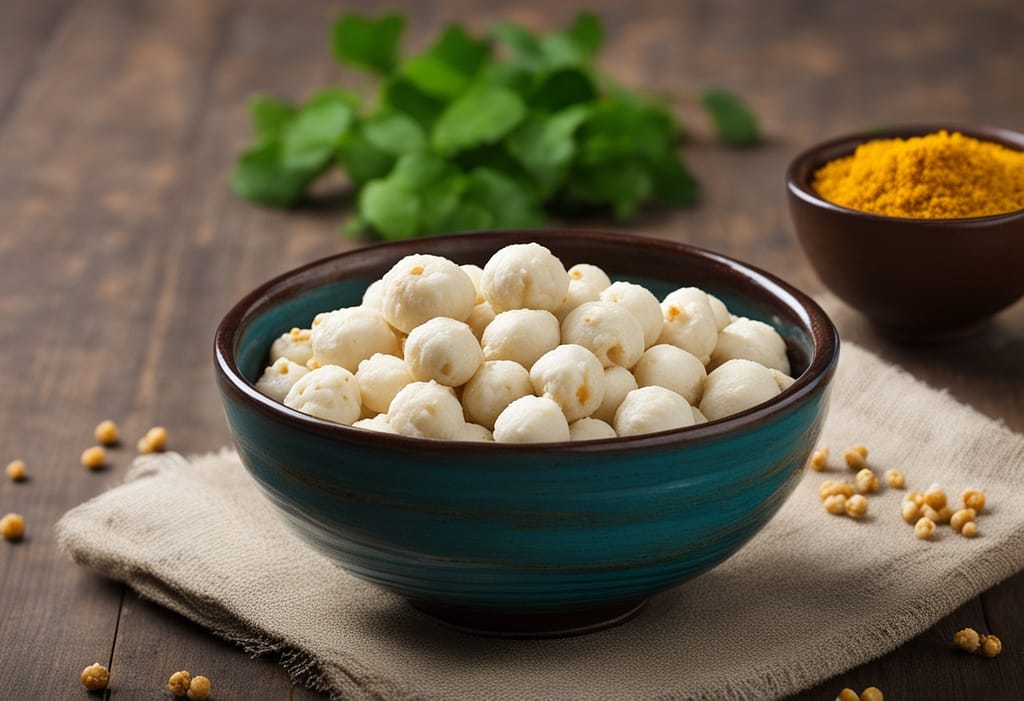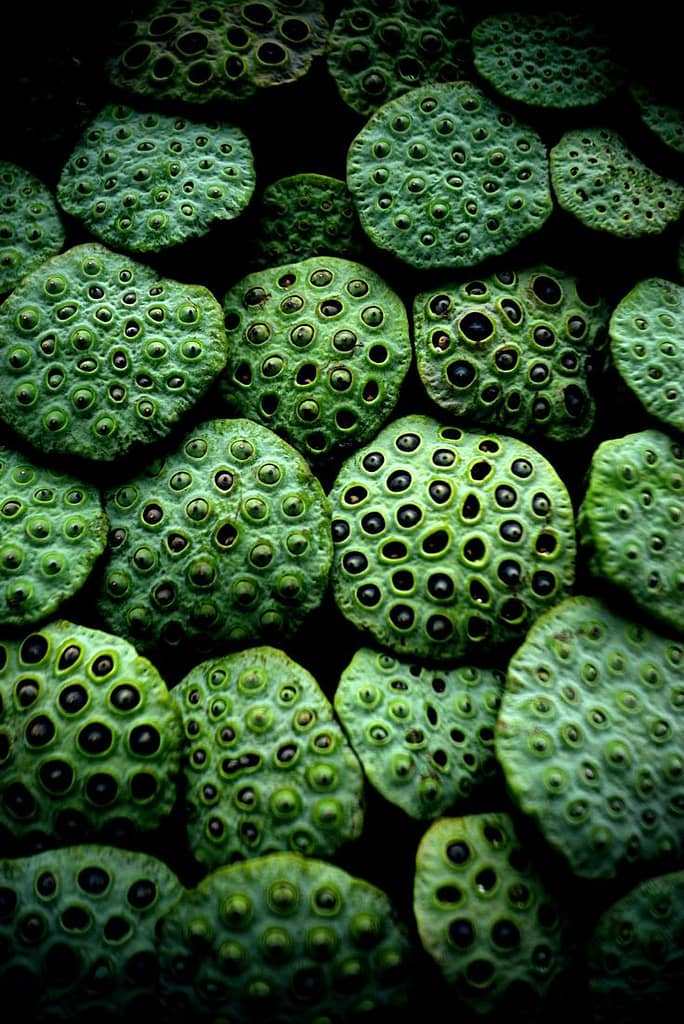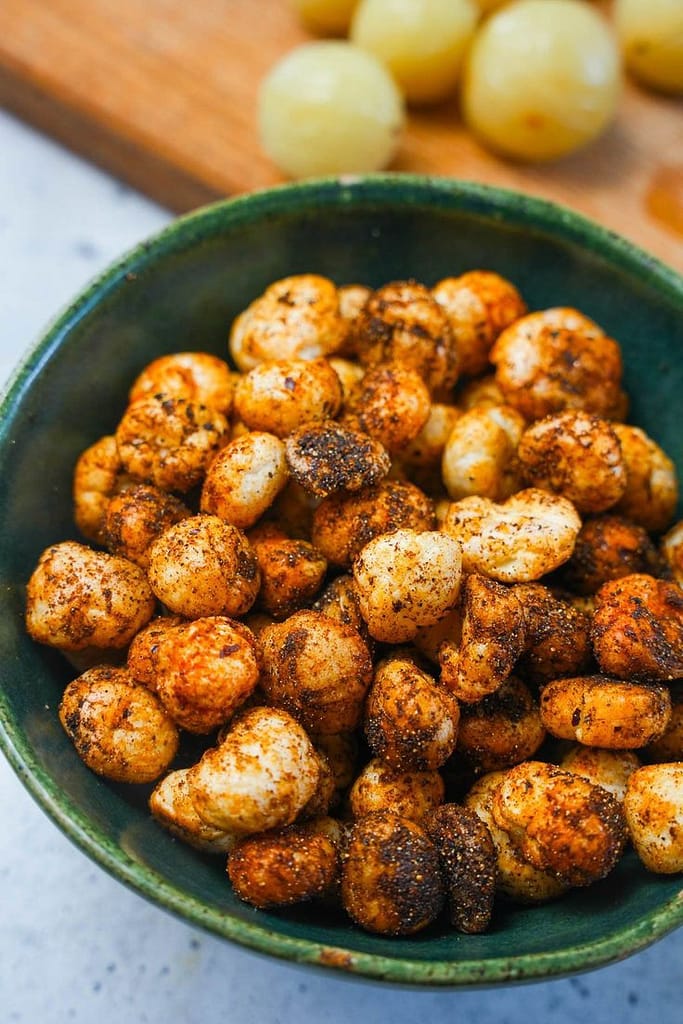Why Makhana is so popular?
Before we learn about the benefits of makhana, let’s try to understand what makhana is, where it comes from, and what makhana looks like.

What is Makhana and what is the Benefits of Makhana
Why makhana is so popular? And Makhana and what is the Benefits of Makhana ? Just because Makhana benefits Makhana, also known as fox nuts or lotus seeds, Makhana has gained popularity due to several reasons like Nutrition Benefits, Low Calories, Gluten Free and Low Glycemic Index, Versatile Usage and makhana is considered beneficial for various health issues like inflammation, digestion, and strengthening the immune system.
Makhana has cultural significance in some regions, being used in religious rituals and festivals and the Overall, the combination of health benefits, versatility, and cultural significance has contributed to makhana’s popularity.

Why Makhana is So Popular: Top 10 Makhana Benefits
Why Makhana is So Popular ? Makhana benefits, Makhana is also known as fox nuts or lotus seeds, has captured the attention of health enthusiasts and culinary experts worldwide. This nutrient-dense snack has transitioned from a traditional Indian staple to a globally recognized superfood, celebrated for its impressive health benefits and versatile uses. In this comprehensive guide, we’ll explore the reasons behind the skyrocketing popularity of makhana and delve into its numerous benefits.
1. Nutritional Powerhouse
Why Makhana is So Popular ? One of the foremost reasons makhana is so popular is its remarkable nutritional profile ie makhana benefits. Makhana is celebrated for its low-calorie and high-protein content, which makes it a desirable snack for health-conscious individuals.
- High Protein Content: Makhana is a significant source of plant-based protein, which is essential for muscle repair, immune function, and overall growth. For vegetarians and vegans, makhana offers a valuable protein source, contributing to their daily protein intake without the need for animal products.
- Low in Calories: Makhana is a low-calorie snack, with approximately 100 calories per serving. This makes it an ideal choice for those looking to manage their weight or reduce calorie consumption while still enjoying a satisfying snack.
- Rich in Antioxidants: Makhana is packed with antioxidants that combat free radicals in the body. These antioxidants are crucial in reducing oxidative stress, lowering inflammation, and decreasing the risk of chronic diseases such as heart disease and cancer.
- Mineral-Rich: Makhana is a good source of essential minerals, including magnesium, potassium, and phosphorus. These minerals support healthy bone development, regulate blood pressure, and ensure proper nerve and muscle function.

2. Versatility in Culinary Uses
Makhana’s versatility in cooking has contributed significantly to its rising popularity. This superfood can be used in a variety of dishes, from savory snacks to sweet desserts, making it a favorite ingredient in many kitchens.
- Popular Snack: Roasted makhana is a popular and convenient snack. It can be seasoned with various spices, such as salt, pepper, and chili powder, to create a crunchy and flavorful treat. This snack is also an excellent addition to mixed nuts and dried fruits for a nutritious trail mix.
- Culinary Innovation: Makhana’s mild flavor allows it to absorb the tastes of the spices and ingredients it is cooked with. It can be added to curries, stews, and salads, enhancing the dish’s texture and flavor. Traditional Indian dishes like ‘makhana kheer’ (a sweet pudding) and ‘makhana curry’ showcase its culinary versatility.
- Healthy Substitutions: Makhana can replace high-calorie ingredients in recipes. For instance, it can be used instead of croutons in salads or as a topping for soups and yogurts, providing a satisfying crunch without the added calories.
3. Cultural and Ayurvedic Significance
The cultural and Ayurvedic significance of makhana has played a role in its sustained popularity. This superfood has been an integral part of traditional medicine and cultural practices for centuries.
- Ayurvedic Medicine: In Ayurveda, makhana is valued for its cooling properties and is believed to balance the body’s doshas (vata, pitta, and kapha). It is used to address various health issues, including digestive problems, kidney disorders, and sexual health. The antioxidant and anti-inflammatory properties of makhana make it a staple in Ayurvedic treatments.
- Cultural Relevance: Makhana holds cultural significance in India, where it is used in religious ceremonies and fasting rituals. It is considered a pure, ‘satvik’ food conducive to spiritual growth. The traditional use of makhana during festivals and religious observances underscores its importance in Indian culture.
- Symbol of Prosperity: Makhana is often associated with prosperity and good fortune in Indian traditions. It is commonly given as a gift during weddings and other celebratory events, reflecting its cultural importance.

4. Global Superfood Status of makhana benefits
The global recognition of makhana as a superfood has significantly contributed to its popularity. As people seek out healthier and more nutritious food options, makhana has emerged as a leading choice.
- Health and Wellness Trend: Makhana’s rise aligns with the global shift towards healthier eating. Its low-calorie, high-protein, and gluten-free attributes make it an attractive option for those on specialized diets, including keto, paleo, and gluten-free plans.
- Celebrity and Influencer Endorsements: The popularity of makhana has been further amplified by endorsements from celebrities, nutritionists, and social media influencers. These endorsements highlight makhana’s health benefits and have helped it gain traction among fitness enthusiasts and health-conscious individuals.
- Increased Availability: As demand for makhana grows, it has become more widely available in supermarkets and online stores. Brands have introduced various flavors and forms of makhana, making it accessible to a broader audience. Ready-to-eat makhana snacks have become popular, catering to busy lifestyles.
5. Sustainability and Ethical Consumption
Makhana’s sustainability and ethical production practices add to its appeal. As consumers become more environmentally conscious, the sustainable nature of makhana production has garnered positive attention.
- Sustainable Farming: Makhana is primarily cultivated in the wetlands of Bihar, India, using traditional farming methods that have minimal environmental impact. The crop is grown with minimal water usage and without harmful pesticides or fertilizers, making it a sustainable choice.
- Fair Trade Practices: The increasing demand for makhana has led to fair trade practices, ensuring that farmers receive a fair price for their produce. This practice supports local communities and contributes to regional economic development.
- Low Carbon Footprint: Makhana production has a low carbon footprint compared to other snacks. The cultivation and processing of makhana involve minimal machinery and transportation, reducing its environmental impact.

6. Health Benefits and Therapeutic Uses
Makhana is renowned for its health benefits and therapeutic uses, which have further fueled its popularity. Its diverse health benefits make it a valuable addition to a balanced diet.
- Diabetes Management: Makhana’s low glycemic index makes it an excellent choice for managing blood sugar levels. The complex carbohydrates and fiber in makhana help regulate blood sugar and prevent spikes, making it suitable for individuals with diabetes.
- Heart Health: The magnesium content in makhana promotes cardiovascular health by regulating blood pressure and preventing arterial plaque formation. The antioxidant properties also help reduce cholesterol levels and lower the risk of heart disease.
- Weight Management: Makhana’s low-calorie and high-protein nature makes it a popular choice for weight management. The protein content promotes satiety and reduces hunger, while the fiber aids digestion and prevents overeating.
- Anti-Aging Properties: Antioxidants in makhana, such as kaempferol, contribute to its anti-aging benefits. These antioxidants help reduce wrinkles and fine lines by neutralizing free radicals that cause oxidative stress.
- Bone Strength: Makhana provides essential minerals like calcium and phosphorus, which are crucial for maintaining strong bones and teeth. This makes it a valuable addition to the diet for individuals concerned about bone health.
7. Adaptation to Modern Lifestyles
Makhana’s adaptability to modern lifestyles has contributed to its popularity. Its convenience and compatibility with contemporary dietary preferences make it an attractive option.
- Convenient Snacking: Makhana’s portability and ease of storage make it an ideal snack for busy individuals. A small packet of roasted makhana provides a quick, healthy, and satisfying snack on the go.
- Customization and Flavors: Modern food brands have introduced a variety of makhana flavors, such as spicy peri-peri, tangy tomato, and sweet caramel. This variety caters to different taste preferences and makes makhana appealing to a wider audience.
- Incorporation in Fitness Regimens: Fitness enthusiasts often include makhana in their diet due to its high protein content and low calorie count. It is a popular choice for pre-workout or post-workout snacks, supporting energy levels and muscle recovery.

8. Psychological and Emotional Appeal
Beyond its nutritional and health benefits, makhana offers a satisfying sensory experience that enhances its appeal.
- Crunch Factor: The unique crunchiness of roasted makhana provides a satisfying texture that many find appealing. This crunch factor makes makhana a delightful alternative to other crispy snacks.
- Comfort Food: Makhana evokes nostalgia and comfort for many, particularly in India, where it is associated with childhood memories and family traditions. This emotional connection adds to its popularity as a comforting and familiar food.
- Mindful Eating: The light and airy texture of makhana encourages mindful eating, which enhances digestion and satisfaction. This mindful approach contrasts with the mindless consumption often associated with processed snacks.
Makhana Farming in details
Makhana is a type of edible seed that comes from the lotus flower, and the major production contribution comes from India followed by China and Japan, From total production india contribute 85% and in India Bihar, West Bengal, Assam is the only state who is farming makhana ( Lotus Seeds ).Bihar is the only state who produced 85% of Makhana Globally.

Makhana is commonly used in various cuisines, especially in Asian countries like India, China, and Japan and currently Arebian Countries Makhana demand is also high.
Makhana seeds

How Makhana Is Looks like?
Makhana has a round shape and a white, crunchy texture when dried. It is often roasted or popped and used in snacks, desserts, curries, and other dishes due to its nutritional benefits and versatile culinary properties.
1 Makhana Plants

2 Makhana Seeds

3 Makhana ( After Proceed)

Nutrition Value of Makhana
Makhana, fox nuts or lotus seeds, is not only a delicious snack but also a nutritional powerhouse. makhana is low in calories and fat, high in protein and fiber, and contains essential minerals and vitamins, making it a healthy choice for snacking. Packed with essential nutrients, makhana offers a range of health benefits that make it a popular choice among health-conscious individuals.
Here is the approximate nutritional value of makhana per 100 grams:
- Calories: 347 kcal
- Carbohydrates: 64.2 grams,
- Fiber: 14.5 grams
- Protein: 9.7 grams
- Sugars: 0.2 grams
- Fat: 1.1 grams
- Saturated Fat: 0.2 grams

These values are approximate and can vary based on factors such as processing methods and specific varieties of makhana. Overall,
Healthy Makhana Recipes
here’s a list of makhana recipes which you can try.
- Roasted Makhana
- Makhana Curry
- Makhana Kheer
- Makhana Chaat
- Makhana Bhel
- Makhana Pudding
- Spicy Makhana
- Makhana Salad

20 FAQs About Makhana Benefits and Its Popularity
1. What is Makhana?
Makhana, also known as fox nuts or lotus seeds, is a seed derived from the lotus plant (Euryale Fox). It is commonly consumed as a snack or used in various dishes in Indian cuisine.
2. What are the key nutritional benefits of Makhana?
Makhana is rich in protein, low in calories, high in antioxidants, and contains essential minerals like magnesium, potassium, and phosphorus. These attributes contribute to its status as a healthful snack.
3. How does Makhana benefit heart health?
Makhana supports cardiovascular health by providing magnesium, which helps regulate blood pressure, and antioxidants that reduce oxidative stress and prevent arterial plaque formation.
4. Is Makhana beneficial for weight management?
Yes, makhana is an excellent choice for weight management. It is low in calories, high in protein, and contains fiber, which promotes satiety and helps control hunger.
5. Can Makhana help in managing diabetes?
Makhana has a low glycemic index, which helps regulate blood sugar levels and prevent spikes, making it a suitable snack for individuals with diabetes.
6. How does Makhana contribute to bone health?
Makhana contains essential minerals like calcium and phosphorus, which are crucial for maintaining strong bones and teeth.
7. Are there any anti-aging benefits associated with Makhana?
Yes, makhana is rich in antioxidants like kaempferol, which help reduce oxidative stress and slow down the aging process by minimizing wrinkles and fine lines.
8. Can Makhana improve digestive health?
Makhana is high in fiber, which aids in digestion and promotes regular bowel movements, contributing to overall digestive health.
9. How does Makhana support kidney health?
In traditional medicine, makhana is believed to support kidney function and prevent kidney-related issues due to its diuretic properties and ability to balance bodily fluids.
10. What role does Makhana play in Ayurvedic medicine?
In Ayurveda, makhana is valued for its cooling properties and is used to balance the body’s doshas (vata, pitta, kapha). It is used to treat digestive issues, sexual health concerns, and kidney disorders.
11. Why is Makhana popular as a snack?
Makhana is popular as a snack due to its low-calorie content, crunchy texture, and ability to be seasoned in various ways. It provides a healthier alternative to traditional snacks.
12. How versatile is Makhana in cooking?
Makhana is highly versatile and can be used in a variety of dishes, including savory snacks, curries, stews, and sweet desserts like kheer. Its mild flavor complements various ingredients.
13. Is Makhana suitable for people with gluten sensitivities?
Yes, makhana is naturally gluten-free, making it an excellent choice for individuals with gluten sensitivities or celiac disease.
14. How does Makhana contribute to mental health?
Makhana contains essential nutrients like magnesium and potassium that support brain function and reduce symptoms of stress and anxiety, contributing to overall mental well-being.
15. What are some traditional uses of Makhana in Indian culture?
Makhana has cultural significance in India and is used in religious ceremonies, fasting rituals, and as a symbol of prosperity during festivals and celebrations.
16. Why is Makhana considered a superfood?
Makhana is considered a superfood due to its dense nutritional profile, including high levels of protein, antioxidants, and essential minerals, which contribute to its numerous health benefits.
17. Can Makhana help with sleep issues?
Makhana contains tryptophan, an amino acid that promotes the production of serotonin and melatonin, which can improve sleep quality and help manage insomnia.
18. What is the environmental impact of Makhana production?
Makhana production is relatively sustainable, as it involves minimal water usage and traditional farming practices that have a lower environmental impact compared to other crops.
19. How has the global recognition of Makhana changed its availability?
Global recognition has increased the availability of makhana, leading to a wider range of products, including flavored snacks and ready-to-eat options, making it accessible to a broader audience.
20. What are some common ways to incorporate Makhana into a diet?
Makhana can be enjoyed roasted as a snack, added to salads, used in curries, incorporated into sweet dishes like kheer, or blended into smoothies for added texture and nutrition.
Conclusion
Makhana’s rise in popularity is attributed to its exceptional health benefits, versatility in cooking, cultural significance, and global appeal. Its nutrient-rich profile makes it a sought-after superfood, while its adaptability to various dietary preferences and culinary uses ensures its continued prominence in health-conscious diets. Whether you’re looking to enhance heart health, manage weight, or enjoy a flavorful snack, makhana offers a wealth of benefits that contribute to its widespread acclaim.
